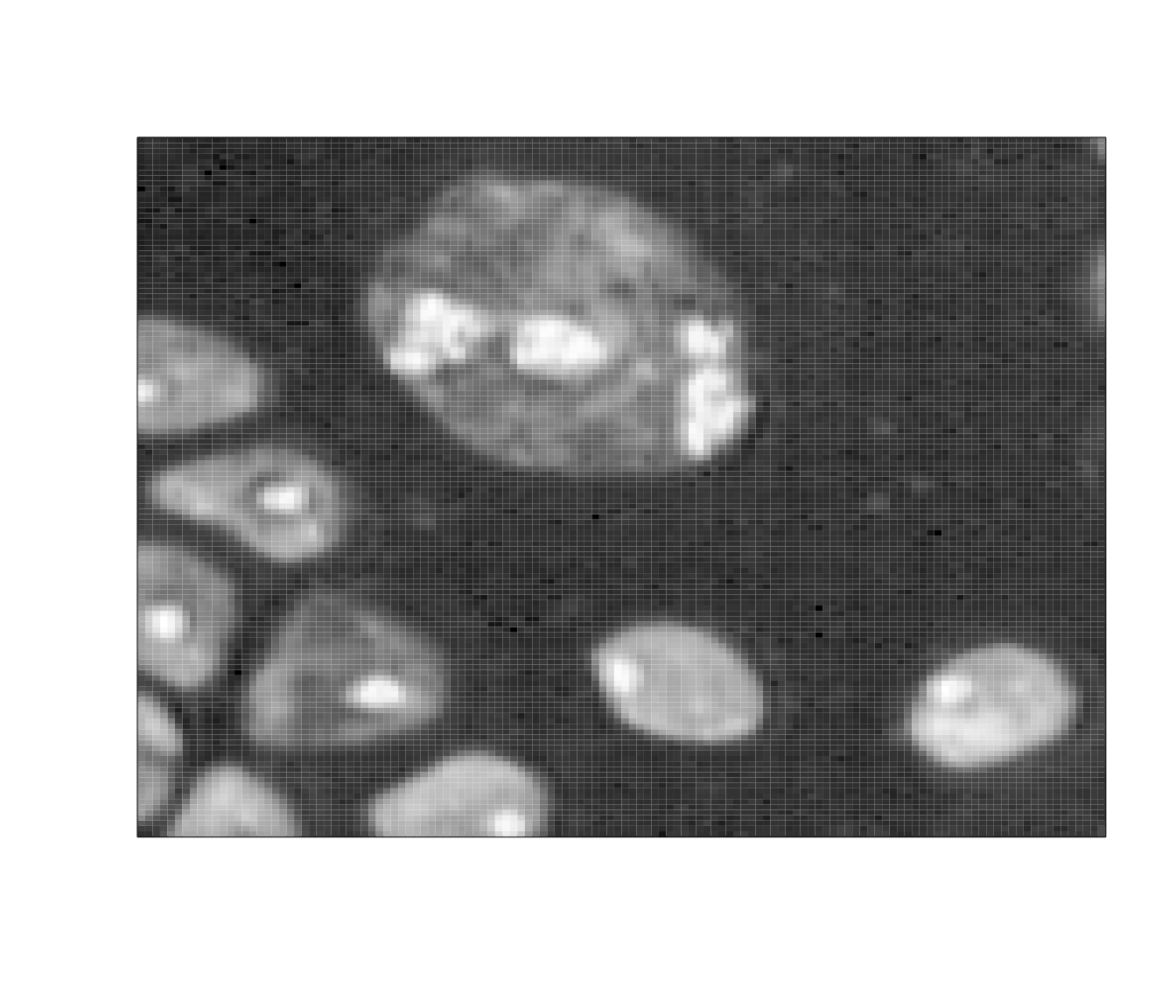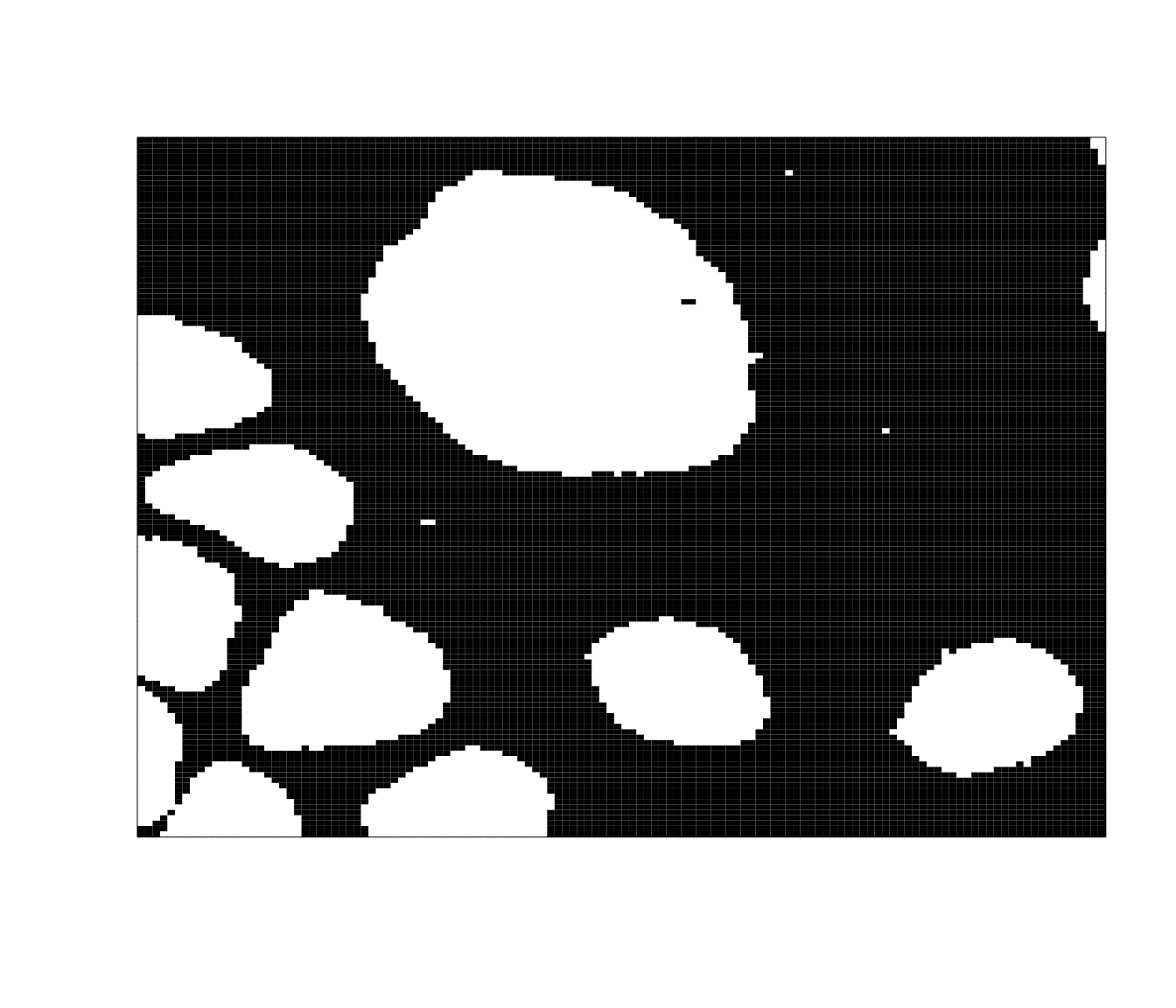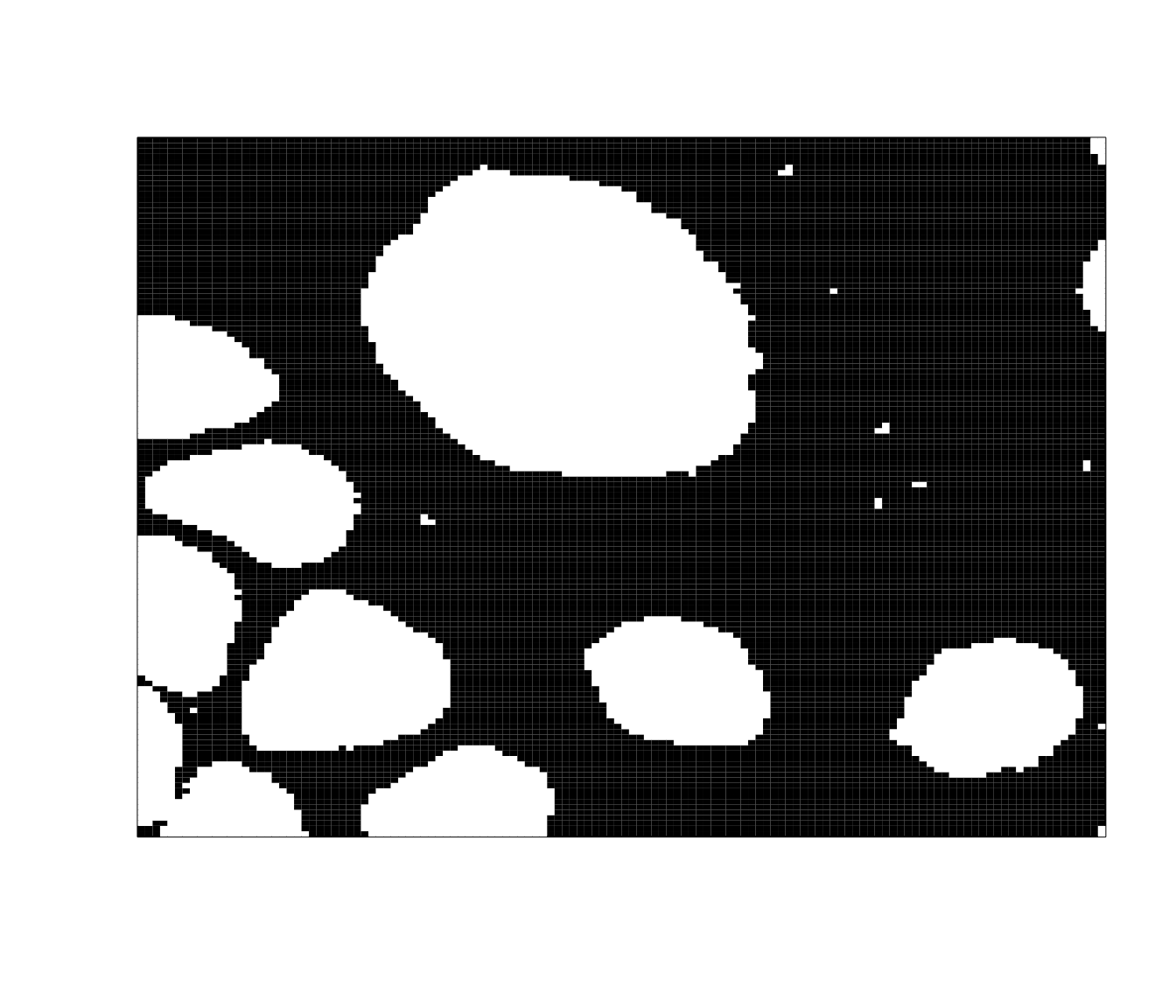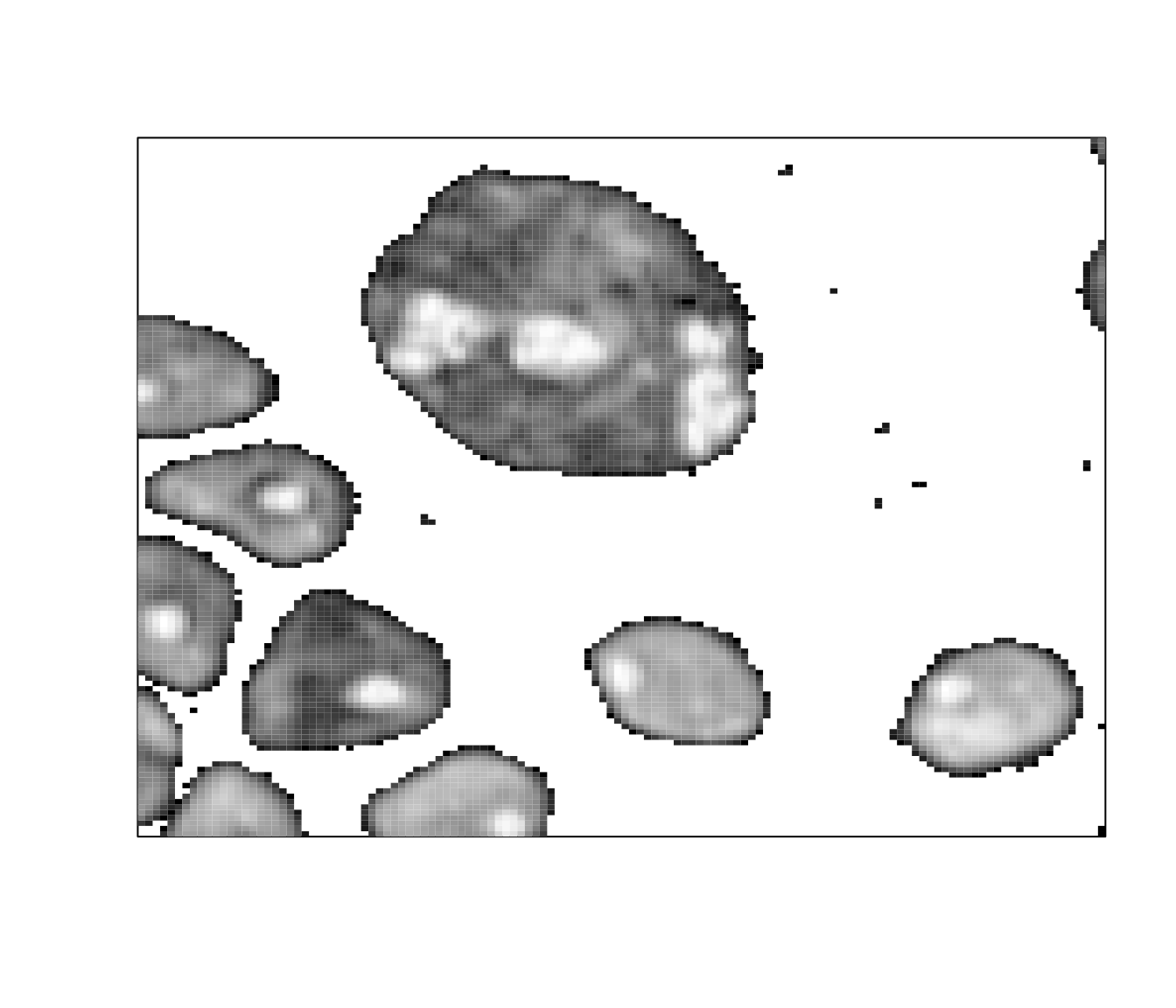Thresholding Images
Although this package is for thresholding anything at all, it has added functionality for thresholding images. This vignette is all about thresholding single-frame, grayscale images. There’s another vignette about thresholding stacks of grayscale images.
We’ll be using the image that comes with the package:
img <- ijtiff::read_tif(system.file("extdata", "fiji_eg.tif",
package = "autothresholdr"
))
#> Reading image from /home/runner/work/_temp/Library/autothresholdr/extdata/fiji_eg.tif
#> Reading an 8-bit, float image with dimensions 130x130x1x1 (y,x,channel,frame) . . .
dim(img)
#> [1] 130 130 1 1
ijtiff::display(img) # displays first channel, first frame
It’s a picture of cells, the black part is where the cells are not. The threshold is supposed to tell us what is dark (not cell) and what is bright (cell). By playing around, we may discover that something like 20 might (for some purposes) be a good value.
ijtiff::display(img[, , 1, 1] > 20)
But what if we have many images and we don’t want to play around, we want a method of calculating the threshold automatically. https://imagej.net/plugins/auto-threshold gives many such methods and they are provided to you in R via this package. Go to that webpage for a nice comparison of the methods.
The function auto_thresh() finds the threshold,
mask() gets the mask (an array with a TRUE for
elements exceeding the threshold and FALSE elsewhere) and
apply_mask() applies the mask to the original image by
setting the elements that don’t exceed the threshold to
NA.
Let’s see each with “Triangle” thresholding.
auto_thresh(img, "tri")
#> [1] 19
#> attr(,"ignore_black")
#> [1] FALSE
#> attr(,"ignore_white")
#> [1] FALSE
#> attr(,"ignore_na")
#> [1] FALSE
#> attr(,"autothresh_method")
#> [1] "Triangle"
#> attr(,"class")
#> [1] "th" "integer"
ijtiff::display(mask(img, "tri"))
ijtiff::display(apply_mask(img, "tri"))
In this last image, the NA pixels are grey.